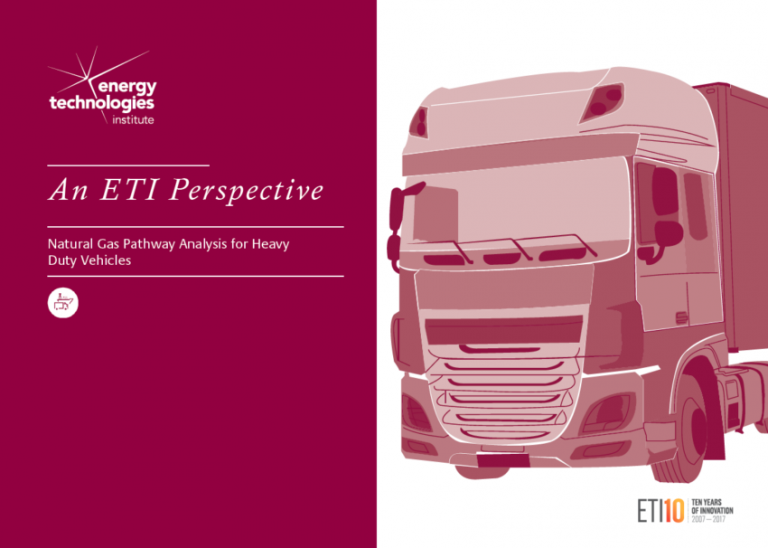ETI report stresses 'best practices' for LNG, CNG and L-CNG as driver to providing pathway benefits
2 November 2017
UCL Energy Institute, along with other partners in the study, use a techno economic and emission analysis model to assess the Well to Motion pathway and to assess future potential of Natural Gas.

Energy Technology Institute launches report on Natural Gas Pathway Analysis for Heavy Duty Vehicles, stressing ‘best practices’ for LNG, CNG and L-CNG as a key driver to providing pathway benefits.
The study suggests Liquefied Natural Gas (LNG) and Compressed Natural Gas (CNG) have the potential to reduce Greenhouse Gas (GHG) emissions over the Well-to-Motion (WTM) pathway by 13% (LNG) - 20% (CNG) for dedicated engines and 16% (LNG) - 24%(CNG) for High Pressure Direct Injection engines per vehicle in the 2035 timeframe in comparison to the reference baseline diesel pathway.
For the marine elements of the techno-economic modelling and UK shipping emissions, UCL Energy Institute was involved through use of GloTraM. In the marine sector, penetration of natural gas vessels is dictated largely by the economic life of most ocean-going vessel which is generally between 25 to 30 years leading to very slow turnover rates. In each of the base and best case scenarios natural gas provides a 14%-15% reduction in GHG emission in 2035. However, if best practices are not followed the large amounts of methane slip and increased upstream pathway emissions could lead to natural gas being up to 8% worse than the HFO and MDO it replaces.
Dr Tristan Smith, Reader at UCL Energy Institute:
“The key message is that the CO2 trajectory is not significantly modified by a move to LNG, and whilst the best case is an improvement, there are significant risks that adopting LNG could make things worse”
Download the full report: Natural gas pathway analysis for heavy duty vehicles
 Close
Close

